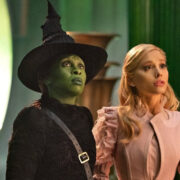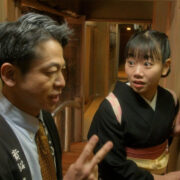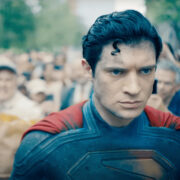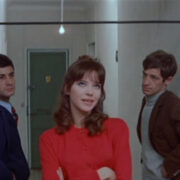San Francisco International Film Festival Week 1 Round Up

Arlin is an all-around film person in Oakland, CA. He…
For the past four months the Bay Area as been inundated with persistent rain and cold that has served to amplify any personal calamities one might have been experiencing, as I definitely was. It’s the kind of weather where it feels like the clouds themselves have given up on trying to hang in the sky and allow gravity to bring them to the Earth, where they can’t muster the energy to find their way back home. But yet, a light shines somewhere in the distance, the promise brought by the dependability of the calendar. It’s the most wonderful time of the year, it’s SF Film Fest time!
The 62nd annual iteration of America’s largest film festival appears all on its own to have broken the spell both on the clouds and my heart, as it has propelled me and my trusty steel Schwinn from Yerba Buena to the Castro and back again in the nicest weather we’ve had all year. The singing birds and budding blossoms seem to be cheering me on from the sidewalks “go Arlin, see the documentaries, see them all!” “I will!” I said, “and I’ll tell you all about them!” This is my report to the birds and flowers on the front half of the festival.
What We Left Unfinished

Mariam Ghani comes from the world of art and archives, and that sensibility is on full display in her first feature documentary. Unfinished showcases four films from Afghanistan’s Communist era once considered lost to Taliban burnings. The footage reveals more in common with the Hollywood action films of the era than the socialist realist cinema of the Soviet Union. The intercutting of films and voice-over can make it difficult to keep the thread about who’s talking about what, but still Unfinished’s mere existence serves a testament to archivists and government supported film, and their historical necessity.
Q Ball

Michael Tolajian‘s documentary about San Quentin Prison’s basketball team really irked me at first, employing needless formal flourishes like slow motion steady cam and sentimental scores, assumedly to infuse drama into a subject where it’s already so inherent. It also initially characterizes its protagonists by their crimes and their on-court talent, while the institutions and power structures at play remain the elephant in the room. But something flipped for me midway through, as emotional sincerity moved to the foreground and the joy that the game brought those featured in the film became undeniable. Q Ball wasn’t made for me, but I enjoyed it nonetheless.
Minute Bodies: The Intimate World of F. Percy Smith

Stuart A. Staples’ collection of excerpts from the scientific films of F. Percy Smith highlights the innate surrealism of nature. In its subject matter and playfulness the film recalls Microcosmos, never needing to contextualize, but rather content with merely presenting phenomenon in all their strangeness, as well as the films of Jean Painlevé, allowing a certain artistry into the supposedly “pure” field of scientific observation. Minute Bodies never really transcends the realm of curiosity but at its short run time I was actually startled when it ended, as I could have kept enjoying the cavalcade of clips for some time longer.
Preceding the film was Passerine in Time by Laurids Andersen Sonne, a short observation of ornithological field work. It was mesmerizing to see the ease with which small birds were captured, analyzed, tagged and released by the anonymous researcher, and like the film that followed, I could easily have continued watching after the final shot.
Kabul, City in the Wind
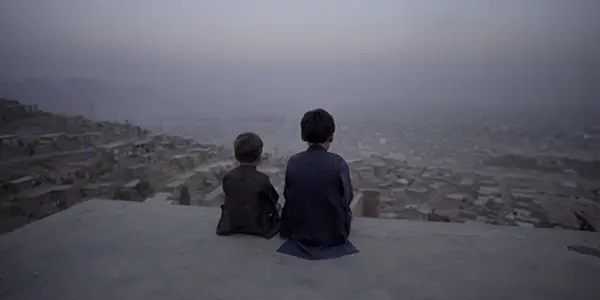
Aboozar Amini makes a striking debut with his observational portrait of life in reconstruction in Afghanistan. Kabul would make a good double feature with last year’s The Distant Barking of Dogs as another exploration of how children navigate daily existential threats and prolonged trauma. The other narrative Kabul tells is that of a beleaguered bus driver/owner trying to repair his means of income while holding off creditors and managing his family and apparent addiction. The film’s intercutting of the two stories highlight the generational divide in facing the future, a universal theme in the current global milieu.
Bloodroot

The saying goes “you only live once”, but Douglas Tirola‘s look at the eponymous Connecticut feminist, vegetarian restaurant/bookstore and its owners makes the point that many experience a few lifetimes. Bloodroot is a thoughtful demonstration of how social movements manifest in the lives of individuals, as displayed through the biographies of Selma Miriam and Noel Furiebut. While their ascension into their current selves is fascinating, an exploration of their relationship with each other was almost as lacking as Selma’s class consciousness and self-awareness around appropriation. With interviews supported by sometimes confounding archival clips, Bloodroot is an ode to this feminist landmark at once thorough and wanting.
We Believe in Dinosaurs

Monica Long Ross and Clayton Brown‘s look at the Ark Encounter, Kentucky’s monument to young-earth creationism, highlights the false legitimacy afforded by competent design. Most responsible for that is Patrick Marsh, who created the Jaws ride and whose enthusiastic participation almost feels like a betrayal. Opposite him is beleaguered paleontologist and audience proxy Dan Phelps, whose role in the drama can sometimes feel a little Quixotic, with the Ark standing in for windmills. The film chooses to highlight the horror rather than the absurdity of this endeavor. That’s probably to the filmmakers’ credit, but I could have done with a a smidgen of humor in a film about people who believe dinosaurs lived a few thousand years ago.
Boots Riley: State of Cinema Address
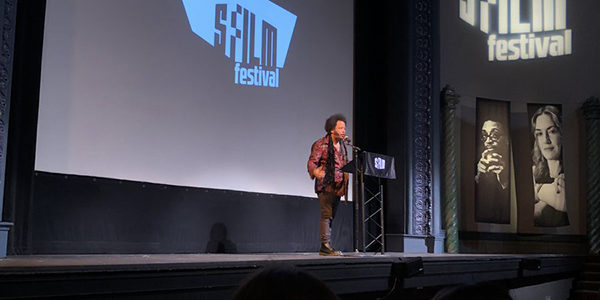
The newly-minted auteur opened his lecture with a spoke-word rendition of The Coup’s song “Underdog”, contextualizing the point that would underlie the rest of the talk. Essentially, Boots Riley emphatically made the case for a cinema he says has yet to be realized, one that is in solidarity with he working class and goes beyond mere awareness into promoting action. Though he didn’t address it directly, one can assume that he would consider his premiere feature Sorry To Bother You to at least strive for those aims, in that it shows the power of collective action of workers against their corporate overlord. He actually addressed relatively little about film at all, with most of the focus recounting the history of the American Left and its fracturing over the last century.
To that end, I was frequently reminded of Adam Curtis’ Hypernormalization which touches on some of the same themes to begin its arguments. It was an entertaining talk, and Riley takes great care as a speaker to be thoughtful in his words, as one would expect from a seasoned MC. But I wish that more space had been allowed both for Riley to bring the conversation back to movies, and for an open dialogue to occur beyond the typical Q&A since so much of his focus was on issues critical to the zeitgeist. Suffice to say everything he said was pretty on the money, I would have just loved to get his thoughts on early Soviet cinema and if he thought those films could be a guide, or if his ideal cinema was something else entirely.
POV Award: Madeline Anderson

Madeline Anderson is one of those people about whom you might feel embarrassed to have only just learned. I owe this new knowledge of the woman and her work entirely to SF Film’s presentation to Anderson of their Persistence of Vision award. The program began with an illuminating discussion with Anderson and documentarian Dawn Porter, whose fandom was readily apparent. Anderson related to Porter how her career began in New York, after accepting a nanny gig while at NYU for none other than Ricky Leac*ck. This would be her entry into the bourgeoning documentary movement helmed by contemporaries like Albert Maysles and Shirley Clarke. She said that in order to get work as a black woman at that time she really had to hone her craft and go beyond what most editors were able to achieve.
The skill of her craft is on full display in the two films screened as part of the presentation, Integration Report 1 (1960) and I Am Somebody (1970). Anderson developed a technique of splicing newsreel into the footage she shot with her cohorts, and their integration into the films is so complete as to be rendered invisible. This type of editing is such common practice for documentaries that one could mistake it as inherent to the medium rather than an aesthetic choice. Such has been the impact of her work on the field.
When you think of the discourse today regarding women in film, that Anderson made what she did when she did it is its own testament, let alone them being as good as they are. I’d encourage anyone to seek out her work.
Knock Down the House

Director Rachel Lears’ new film could have been another document of impactful change being held up at the walls of establishment institutions. And if she had chosen only thee subjects it would have been. But there was a fourth, and she happened to be Alexandria Ocasio-Cortez. Knock Down the House is certainly vital as a record of its star subject’s political ascension, but even with all the election outcomes predetermined it manages to stay interesting and engaging by focusing on process and the conviction of the women whose campaigns it follows. House resists pandering and is genuinely inspiring, hopefully across the political spectrum.
In My Room
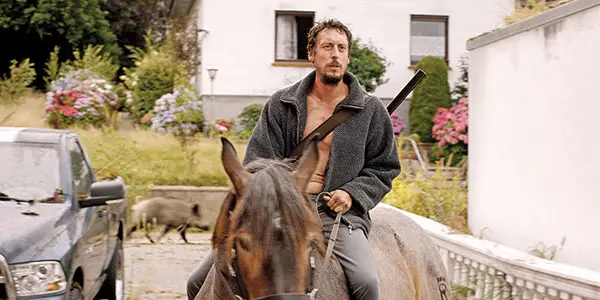
Did you love the Will Forte series Last Man on Earth but thought it was too funny? Then do I have the film for you! The latest from German filmmaker Ulrich Köhler explores much of the same apocalyptic territory as that TV show, including some identical story beats, but ups the existential and survivalist elements considerably. That’s not to say it’s humorless, though, especially in a great opening sequence. Hans Löw, with essentially the entire film on his back, delivers a strong performance featuring one of the most striking and narratively justified dramatic weight losses in recent memory. In My Room is a slow burn for sure, but its commitment to character development over exposition makes it worthwhile.
Toni Morrison: The Pieces That I Am

Timothy Greenfield-Sanders‘ documentary is at its best when it allows its subject the space to relate her own experiences directly, employing her signature wit and thorough thoughtfulness. When Morrison isn’t on camera she is supported by a wealth of literary and cultural figures with abundant love for the American icon. Greenfield-Sanders‘ signature style of shooting interviews helps keep Pieces from suffering the fate of sheer rote-ness that befalls so many biographical documentaries, as does his focus on the period up to and including Morrison‘s nobel prize. If nothing else, it’s sure to have you heading to your library or bookshelf.
Miles Davis: Birth of the Cool

The latest from Stanley Nelson is another interview/archival/repeat affair, but with the added benefit of a soundtrack by Miles Davis. Cool gives enough attention to all of its subject’s various eras and styles to keep most aficionados from claims of exclusion, but in an effort to be all-encompassing offers little in the way of detailed analysis. The breakout star of the film is ex-wife Frances Taylor, whose verve is palpable, even as it falls on her to relate the serious personal criticism without which no examination of Davis‘ life could be honest. Though one could be justified doing an entire feature on each of Miles‘ distinct eras, Cool is sure to be an easy entry point for the uninitiated.
Aquarela

Definitely the heavy metal, iceberg calving, abstracted ocean, 96 fps, environmental documentary of the year. Victor Kossakovsky‘s visceral lament recognizes the glut of climate change documentaries out there featuring experts, statistics, and calls for action, and they have done little to move the needle on the issue. Aquarela goes a different tract, one based on emotion and scale, to engage the audience on a deeper, existential level. The opening and closing sequences alleviate any doubt that the film’s interests are merely aesthetic. To that note there are simply too many frames! My eyes physically hurt by the time the credits rolled. I sincerely hope this new technology is never widely adopted.
Midnight Family

When we talk about health care in the US, it usually is in regards to the harsh economic consequences of getting sick or injured. Those concerns seem to be multiplied exponentially in Mexico City, which only has 45 official ambulances and leaves the gaps to be filled in by independent operators. Luke Lorentzen‘s new film takes us inside the world of one such private ambulance, owned and operated by the Ochoas. The film owes its success to its engaging and entertaining protagonists, its high-stakes context, and Lorentzen‘s skilled editing. The whole film is really a virtuoso demonstration of craft.
One Child Nation

This movie really messed me up, to the point of leaving the theater dehydrated from all the salt water I lost. Even though China’s notorious one-child policy seems like it could command a Shoah-level runtime, Nanfu Wang and Jialing Zhang‘s film feels remarkably comprehensive despite its 85 minutes. The strength of the film lies in its intimacy, prioritizing the recollections of Wang‘s own family and community members to build the bulk of its narrative. I have to say I have a personal connection to the topic of this film, so feel like my objectivity here is limited, but I’m fairly confident it’s an amazing work of familial and national history.
The Grand Bizarre

After the draining experience of One Child Nation I walked into just the right screening with Jodie Mack‘s latest. A calvacade of color, fabric, and eclectic head-bobbers, Bizarre is a stop-motion fantasia and exploration into the world of international textiles. There’s no narration or text, only the unrelenting parade of stitches whose significance will vary based on the viewer. The effect of the film is totalizing, and is probably a concisely efficient way to communicate the experience Mack must have had researching and creating such a singular work. An exercise in aesthetic aesthetics with undertones of colonialism and globalization, should you have an opportunity to see it, The Grand Bizarre is not to be missed.
The film was preceded by Accidence, a short from Evan Johnson, Galen Johnson, and none other than Guy Maddin. The film is simply a single shot onto an array of balconies where multiple wordless narratives play out. The compositing of the sets into the single large shot appeared to me like the opening credits sequence for a sitcom about the kooky residents of an apartment building. I’m not sure whether there was too much going on or not enough, but I quickly lost interest in keeping the threads together on this Rear Window riff and dutifully waited for Bizarre to begin.
The Great American Lie

The latest from Jennifer Siebel Newsom is an essay film that makes some strong points about economic sexism and the broad detrimental effect values coded as “masculine” have wrought upon American society. But it does this rather inelegantly, intercutting expert interviews fast and furiously and employing an aesthetic that at time feels akin to a Zeitgeist for progressives. While watching Lie I couldn’t help but think of Riley’s comments just a few days prior regarding film needing the move beyond mere awareness. But the messaging here about the need for a cultural and spiritual shift seems short on actionable items, especially when it seems so ardently to preach to the choir, and songs they know well at that.
American Factory

The latest from Julia Reichert and Steven Bognar features no shortage of cultural misunderstandings, and there is a lot of fruit borne from this collision of Chinese-style capitalism and blue collar America. One of my favorite scenes so far this year featured an American supervisor having some sort of personal revelation following a series of song and dance numbers during a corporate event in China. But the main dramatic tension of the film would be one too familiar to US audiences, that of labor versus management. As engaging as the film is I’m not sure that the filmmakers did enough to make the distinction between clashes of culture and those of class.
What have been your highlights from SFFILM Fest so far?
Does content like this matter to you?
Become a Member and support film journalism. Unlock access to all of Film Inquiry`s great articles. Join a community of like-minded readers who are passionate about cinema - get access to our private members Network, give back to independent filmmakers, and more.
Arlin is an all-around film person in Oakland, CA. He received his BA in Film Studies in 2010, is a documentary distributor and filmmaker, and runs Drunken Film Fest Oakland. He rarely dreams, but the most frequent ones are the ones where it's finals and he hasn't been to class all semester. He hopes one day that the world recognizes the many values of the siesta system.


